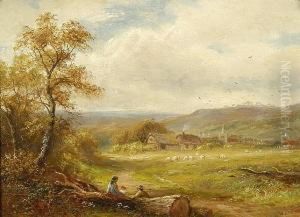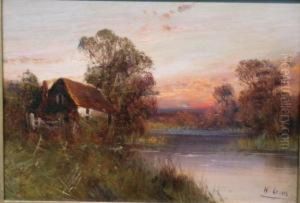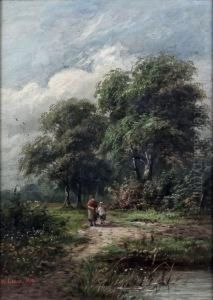Lewis William Wyatt Paintings
Lewis William Wyatt was an English architect born in 1777, hailing from a family with a strong tradition in architecture. He was the nephew of the famous architects Samuel Wyatt and James Wyatt, the latter being one of the most renowned English architects of the 18th century. Lewis William Wyatt continued the family legacy, making significant contributions to the architecture of Regency and early Victorian Britain.
Wyatt's career began after he was articled to his uncle Samuel, and later he worked alongside his cousin Benjamin Dean Wyatt, James Wyatt's son. Throughout his career, Lewis William Wyatt developed a reputation for his work on country houses, where he often adopted the classical style and occasionally the Gothic style, which was popular during the period.
His notable works include the remodeling of Heaton Hall in Manchester, the design of Tatton Park in Cheshire, and the construction of several churches. His work at Tatton Park is particularly significant as it is considered one of his masterpieces, demonstrating his skill in handling grand and complex architectural projects.
Despite being less well-known than his uncle James Wyatt, Lewis William Wyatt was a respected architect in his own right. He contributed to the architectural landscape of England during a period of transition from the Georgian to the Victorian era. His work reflected the changing tastes of the time, moving from the Palladian and neoclassical styles towards a more eclectic approach that incorporated a variety of historical styles.
Lewis William Wyatt's influence can also be seen in the works of later architects, as he was involved in the training of the next generation, including his own nephew, Matthew Digby Wyatt. Lewis William Wyatt passed away in 1853, leaving behind a legacy of important architectural works and a family tradition that had a lasting impact on English architecture.




